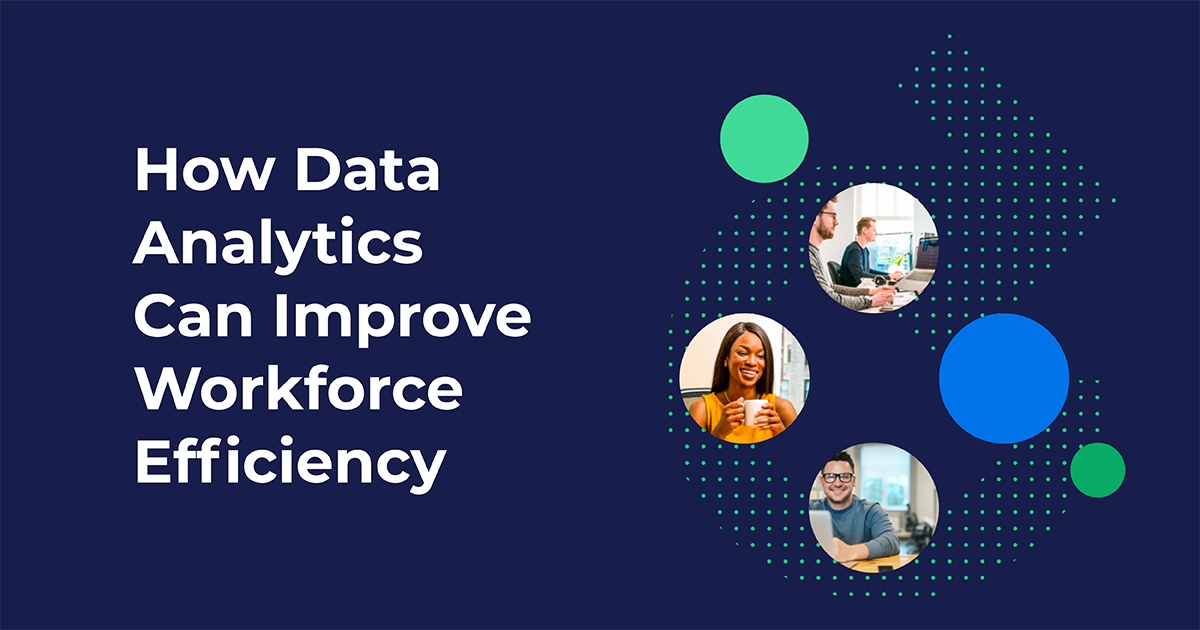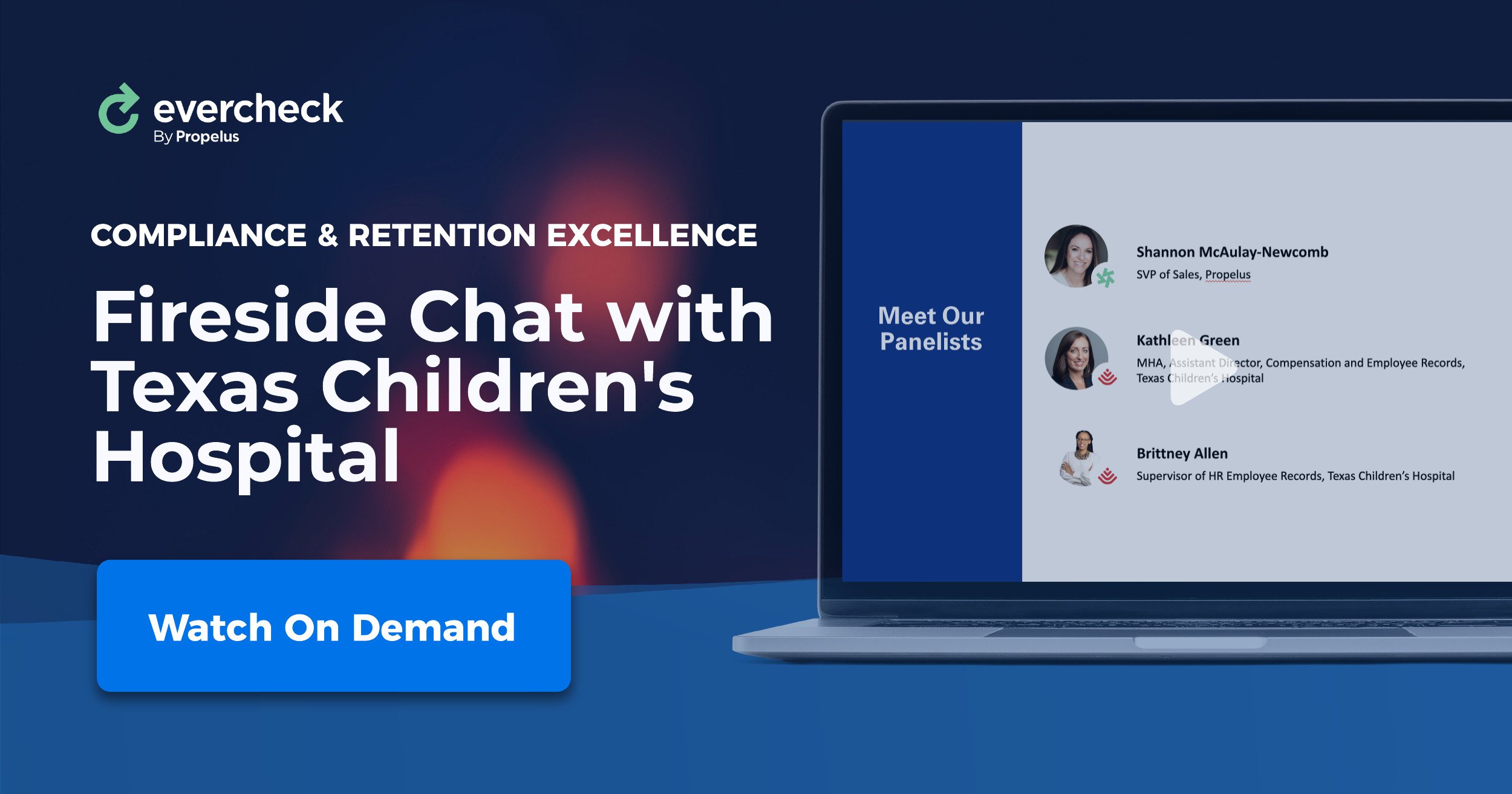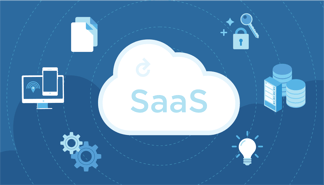
If you’ve just signed on with a new software as a service (SaaS) provider, congratulations. Today, organizations need change-makers like you more than ever. As business challenges become more complex, it’s important to continuously question the status quo and seek better solutions.
Now that you’ve signed the contract, it’s go time. Or… is it? If you’re implementing a SaaS solution, there’s a high likelihood that it’s not completely turnkey. There may be an implementation period where you, your vendor, and a carefully curated team work together to implement the software, drive adoption across the organization, and define new business processes.
For more than 20 years, I’ve worked alongside hospitals to implement enterprise SaaS solutions. Today, I head up implementation at EverCheck, a SaaS provider for automated license management. During this time, I’ve seen what successful and not-so-successful projects look like, and I’m here to share some of the best practices to implement your new solution. From setting proper expectations to maintaining transparency with your Project Lead, here are some of my tried-and-true practices that are sure to set you up for success.
Assemble your team & sell the vision.
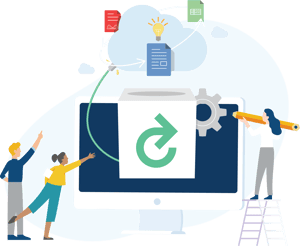 Now that it’s go-time (for the project), it’s important to make sure that you have your teams and resources lined up and clued into the project. Ask your Project Lead for a full list of resources that will be required, and make sure these teams and/or individuals are included on the initial kick-off call. Ensuring all necessary parties are at the table up front helps minimize disruptions and setbacks later.
Now that it’s go-time (for the project), it’s important to make sure that you have your teams and resources lined up and clued into the project. Ask your Project Lead for a full list of resources that will be required, and make sure these teams and/or individuals are included on the initial kick-off call. Ensuring all necessary parties are at the table up front helps minimize disruptions and setbacks later.
Sometimes, the people who are tasked with helping make your implementation successful haven’t been part of the initial discovery or decision-making process. It’s possible they’re not aware of the challenges this new solution is solving for you. The decision-makers must communicate a clear vision for their project team. This includes overarching goals and objectives. Paint the picture of the current versus future state and how your challenges are being met with the solution. This will elicit buy-in from your team. Be clear about timelines, measures of success, the ideal adoption rate, and any other objectives you’re trying to achieve. This helps your project team understand why they’re being asked to take on additional work and the benefits that lie ahead. Project teams should be empowered to take leadership’s vision and drive it forward.
 Remember, lean on your vendor team. At EverCheck, we build a short product demo into our kickoff calls. It’s not nearly as extensive as our standard product demos; however, it delivers enough information for those who haven’t been part of the process thus far to understand the value. Feel free to ask your SaaS Project Lead to do the same.
Remember, lean on your vendor team. At EverCheck, we build a short product demo into our kickoff calls. It’s not nearly as extensive as our standard product demos; however, it delivers enough information for those who haven’t been part of the process thus far to understand the value. Feel free to ask your SaaS Project Lead to do the same.
Be ready to give your project the time and attention it deserves.
Some SaaS solutions are turnkey and ready to use almost immediately. Others require more input and effort. Ask your Project Lead as part of your initial conversations what percentage of time you and your team should plan on dedicating to the project. Get an understanding of how these time resources may fluctuate over the course of the project. For instance, the initial ramp-up period may require roughly 10-15% of your weekly time, whereas nearing go-live may require upwards of 35-40% of your time to ensure all the details are finalized, and the rollout goes smoothly.
Regardless of whether your implementation takes a day or a year, it’s important to give the project the time, engagement, and energy it deserves. Keep your “why” in mind to stay motivated.
Coordinate other projects & resources.
Take an inventory of the current and future projects on your roadmap. These projects may require some of the same resources as your new SaaS implementation. Your implementation may also be dependent upon the successful completion of one or more of these projects. For instance, at EverCheck, we often see our project as one component of a larger shift from one HR system to another. Some tasks can be completed congruently. Others may need to wait as they have certain dependencies.
Share your roadmap with your Project Lead early. They’ll be able to provide you with context as to what resources or tasks may overlap and which may be dependent. This allows you and your team to align schedules so that resources aren’t spread too thin or unavailable altogether. It also allows you to coordinate timelines accordingly.
Trust the process.
You’ve seen the project plan. Your team is assembled. You feel ready to go and eager to get your new solution live.
Trust your Project Lead to guide you through the process despite your preparedness. Your SaaS vendor has built the project plan based on years of experience, so they’re intimately familiar with the tasks, milestones, and timelines needed for an on-time go-live. Interrupting or interfering with this tested process could be an opportunity for risk or uncertainty. Allow your Project Lead to do what they do best, and lean on them as your partner with a shared goal. If you have any ideas or concerns, share them, and together, you and your Project Lead can find a solution.
Allow your Project Lead to do what they do best,
and lean on them as your partner with a shared goal.
Be transparent with your Project Lead.
 Your Project Lead is a lot like a doctor in the sense that there’s likely nothing they haven’t heard before or that would surprise them. They are your counterpart in this process and your partner in success. Engage openly, honestly, and often. It’s better to provide your Project Lead visibility if barriers prevent your team’s progress. This transparency allows them to adjust and consider re-arranging tasks to keep the project’s momentum going.
Your Project Lead is a lot like a doctor in the sense that there’s likely nothing they haven’t heard before or that would surprise them. They are your counterpart in this process and your partner in success. Engage openly, honestly, and often. It’s better to provide your Project Lead visibility if barriers prevent your team’s progress. This transparency allows them to adjust and consider re-arranging tasks to keep the project’s momentum going.
Be prepared for your current workflows to change.
Implementing a new solution is an opportunity to think holistically. Be open to the idea that your business processes, not just the systems themselves, may look different than they did before. Although change can be uncomfortable, this is a fantastic opportunity to step back and examine your processes with clear eyes. Embrace the change, step outside the box, and you can potentially develop a better way of doing things as opposed to trying to shoehorn the software to work within current processes.
Continue to optimize after go-live.
 Go-live is a calculated milestone. Once certain criteria have been met, you can say with confidence that your new solution is fully activated. However, you should be prepared for optimization efforts to continue beyond go-live. This period is less about winding down and more about making critical observations and refinements. Only once your solution is live can you get a clear sense of how your teams are adapting to their new system and processes. They may have insightful feedback that allows you to adjust what had initially been programmed and implemented. At EverCheck, we like to say that projects are never done; they’re only due. This perspective allows us to remain nimble and open to the idea that there’s always room for improvement. Here, your Client Success Manager is well-equipped to provide you with ongoing guidance and support as you continue to optimize your solution for your organization.
Go-live is a calculated milestone. Once certain criteria have been met, you can say with confidence that your new solution is fully activated. However, you should be prepared for optimization efforts to continue beyond go-live. This period is less about winding down and more about making critical observations and refinements. Only once your solution is live can you get a clear sense of how your teams are adapting to their new system and processes. They may have insightful feedback that allows you to adjust what had initially been programmed and implemented. At EverCheck, we like to say that projects are never done; they’re only due. This perspective allows us to remain nimble and open to the idea that there’s always room for improvement. Here, your Client Success Manager is well-equipped to provide you with ongoing guidance and support as you continue to optimize your solution for your organization.
Your efforts will be worth it in the end, and then you’ll
have the chance to step back and admire yours
and your team’s hard work.
My last and best piece of advice is to try and enjoy the process. You’re making a change for the better, and you get to design the process anew. You’ll undoubtedly be impacting your workflows and making life a little easier for others across your organization, too. Your efforts will be worth it in the end, and then you’ll have the chance to step back and admire your and your team’s hard work.
About the author
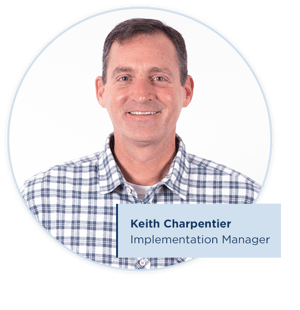 Keith Charpentier is EverCheck’s Implementation Manager and oversees more than 60 enterprise SaaS implementations annually. For more than 20 years, he’s worked with hospitals and health systems implementing software - from complex implementations to onsite support and remote team management. In his free time, he’s surfing at home in Neptune Beach or golfing with his wife, who has an arguably better short (and long) game.
Keith Charpentier is EverCheck’s Implementation Manager and oversees more than 60 enterprise SaaS implementations annually. For more than 20 years, he’s worked with hospitals and health systems implementing software - from complex implementations to onsite support and remote team management. In his free time, he’s surfing at home in Neptune Beach or golfing with his wife, who has an arguably better short (and long) game.

